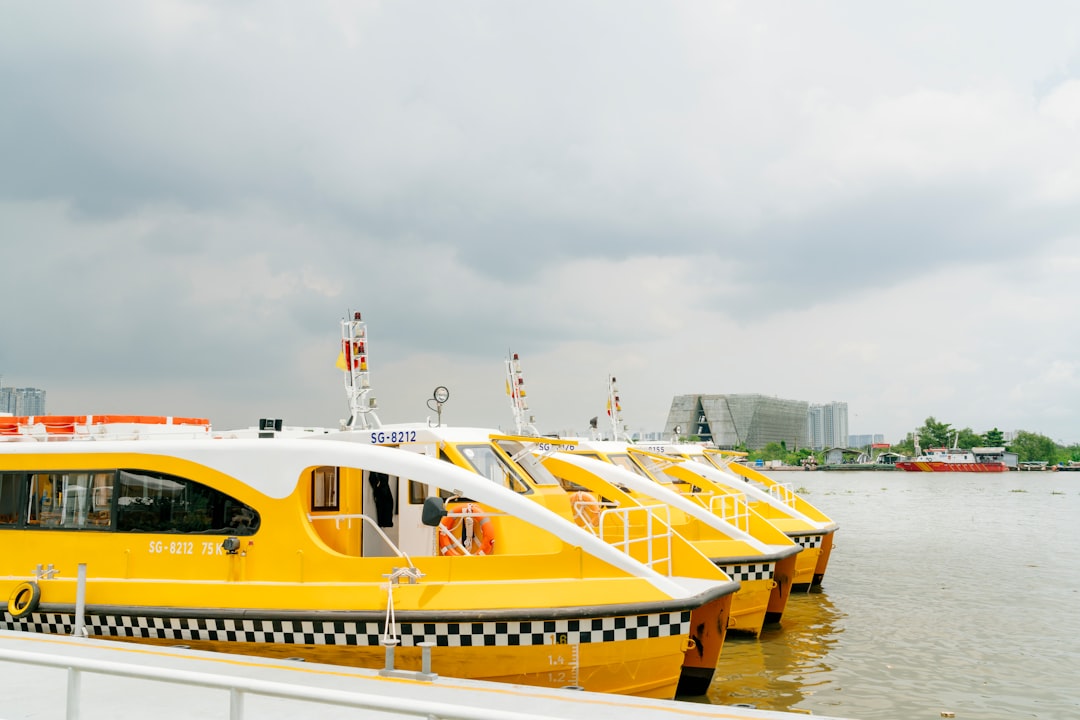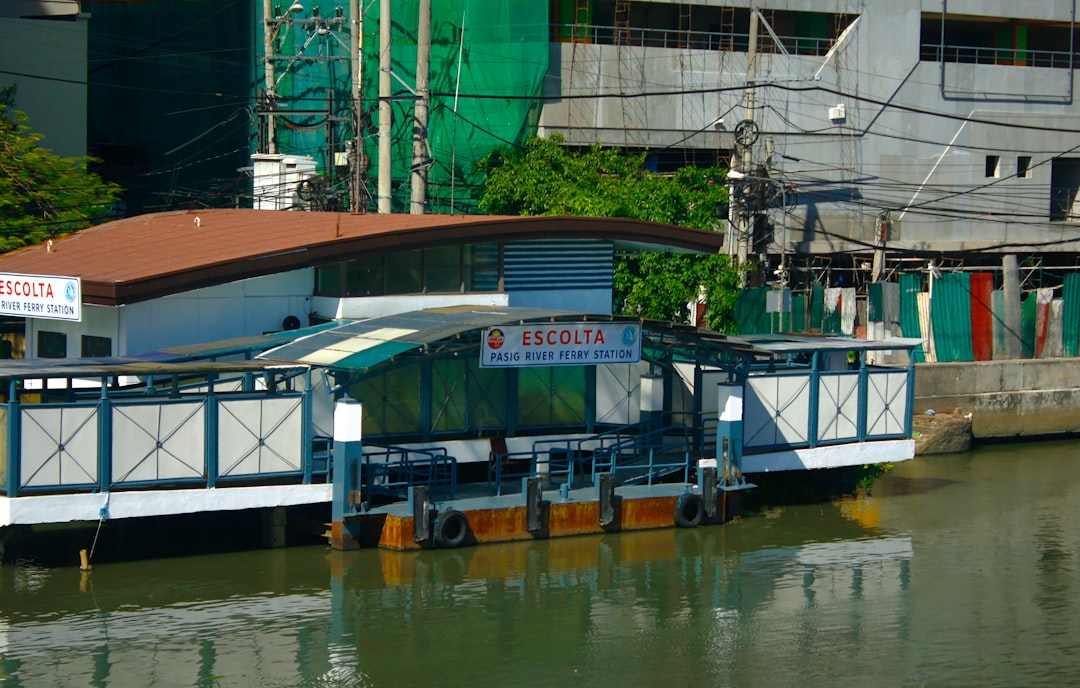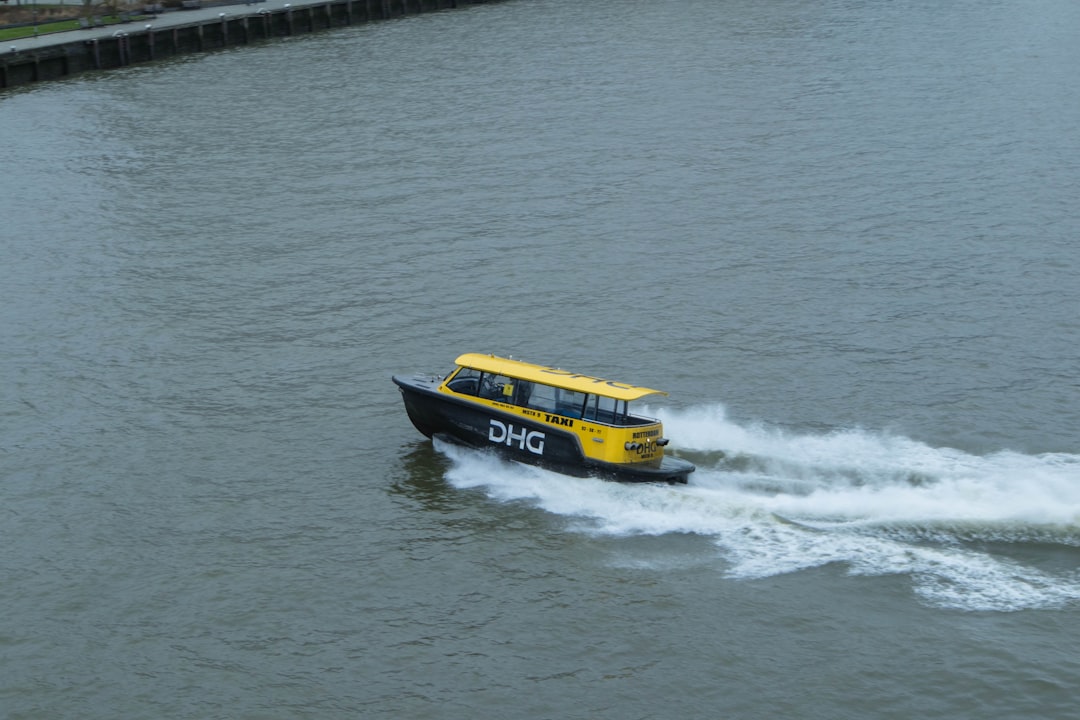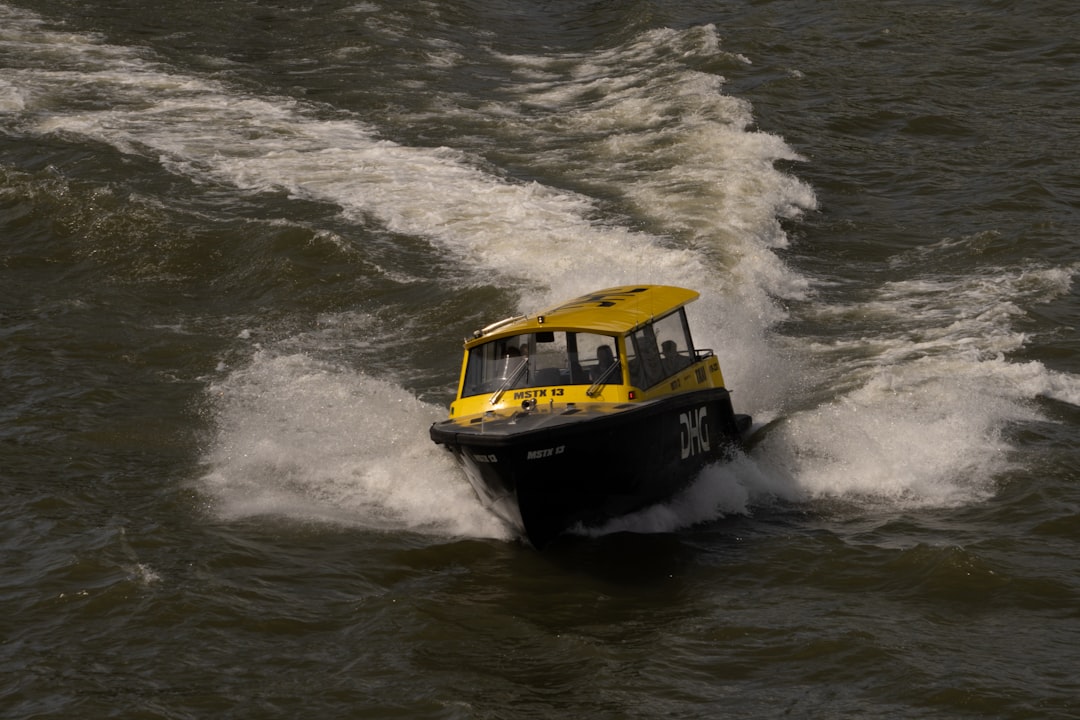

Engage prospects with a scan and streamline customer engagement with FREE QR code marketing tools by Sona – no strings attached!
Create a Free QR CodeFree consultation

No commitment

Engage prospects with a scan and streamline customer engagement with FREE QR code marketing tools by Sona – no strings attached!
Create a Free QR CodeFree consultation

No commitment
In today's digitally connected environment, water taxi services are evolving to meet modern customer expectations for safety, convenience, and seamless experiences. Passengers searching for water taxi routes, reviews, ticketing systems, and unique journeys expect quick, secure access to information without friction or unnecessary steps. With limited physical space, time-sensitive routes, and direct interaction defining every transaction, bridging the offline and online divide is a major industry challenge.
Many providers still struggle with outdated manual processes that result in lost bookings, incomplete data on passenger interests, and fragmented touchpoints. Prospects who browse routes but do not submit forms are easily lost, and anonymous traffic on booking sites often goes unrecognized, leaving valuable intent signals unexplored. QR codes have emerged as a practical and powerful solution for water taxi providers aiming to optimize every touchpoint, from ticketing to onboard experiences.
With a simple scan, passengers can book tickets, access route maps, leave reviews, and receive critical safety information. This approach streamlines operations while turning interest into actionable engagement and revenue. Used strategically, QR codes link physical surfaces such as docks, boats, brochures, and wristbands to digital destinations that convert, measure, and improve outcomes across the entire rider journey.

Water taxi services often miss high-value prospects who interact on-site but do not complete traditional booking flows. QR codes bridge the gap between physical touchpoints such as boat docks, onboard signage, and printed tickets, and digital outcomes, making it easier to drive bookings, capture reviews, and enable digital ticketing even when contact information is not submitted through a form. They also streamline outdated analog processes that create friction and waste time.
In many operations, printed schedules, cash-only sales, and manual sign-up sheets slow down lines and discourage curious riders who are not ready to commit. Replacing these assets with QR-enabled flows lets riders self-serve in seconds: scan to see live routes, tap to buy, receive a mobile ticket, and board without manual screening. The result is faster throughput at docks, cleaner data, and better attribution of demand across locations and times.
Here is how to do it effectively:
For example, deploying QR codes at boarding points can convert passengers who hesitate to engage verbally or fill out forms. Dynamic codes allow rapid content updates when schedules change or weather disrupts service, which minimizes outdated information and maximizes conversion opportunities without reprinting signs.
And yes, a platform like Sona QR supports every step of this transformation: from generating dynamic codes and managing destinations to analyzing performance and syncing results to your CRM for automated follow-up.

Water taxi providers frequently encounter barriers when trying to identify passengers who are interested, leading to missed engagement and lost opportunities. In a fast-moving environment, people decide quickly based on proximity, weather, and timing. Without an instant digital onramp, operators cannot capture intent at the moment it forms or follow up effectively later.
QR codes solve this by reducing friction to a single scan, then turning that scan into a trackable action. When riders can immediately book, find their route, or submit feedback without downloading an app, adoption rises across age groups and device types. For a real-world example, see water taxi QR. For operators, each scan yields data on where and when interest spikes, which creative or message drove action, and which audiences are most likely to convert.
In short, QR codes bridge critical gaps in the rider journey: they remove speed bumps for customers, replace guesswork with data, and strengthen operational transparency.
Water taxi operators manage multiple interactions across passenger segments, from commuters and tourists to private charter clients and event organizers. The right QR format ensures each scan triggers the most valuable action and that the destination fits the context. While any format can help, a thoughtful mix of dynamic and static codes delivers the best balance of agility and reliability.
Dynamic QR codes are particularly powerful for water taxis, since they allow you to change destinations as schedules evolve or campaigns rotate. Static QR codes still have a place for permanent needs such as general contact cards or evergreen safety materials. Selecting the right format by use case will help you scale without creating confusion or reprinting costs.
With Sona QR, operators can generate all of these formats in one place, switch destinations on the fly, and monitor performance by asset, route, or partner.

Growth often hides in plain sight along your docks, on your boats, and inside your partner network. The key is to align QR placements with the natural flow of rider attention, then measure which placements actually deliver bookings, reviews, and repeat visits. High-visibility, high-intent moments are your best opportunities to convert and learn.
Consider how passengers move through your system: they spot a sign from a distance, confirm a route near the queue, scan a code while waiting, and take action during or after the ride. Mapping your QR codes to these micro-moments turns idle time into engagement and engagement into revenue.
Aligning QR code deployment with high-value environments lets water taxi companies make targeted, data-backed moves rather than relying on intuition.

Operators often miss upsell or churn-prevention opportunities because engagement signals are not surfaced at the right time. QR codes create structured moments for riders to take action, then tie those actions to specific journeys, vessels, and partners. The following use cases map to common customer interactions across awareness, purchase, experience, and advocacy.
Start with a few high-impact use cases, then expand as you confirm what works. Dynamic codes make it easy to scale once you see consistent engagement at certain docks, during certain hours, or from specific partner placements.
Fragmented data and untracked prospects lead to incomplete pictures of passenger behavior. QR codes convert each scan into a segmentation data point you can leverage across email, SMS, and paid media. By deploying unique codes across key touchpoints, you can automatically differentiate commuters from tourists, locals from out-of-towners, and one-time riders from potential pass holders.
This approach moves you from guesswork to behavioral targeting. When scans are tagged with location, time, and use case, marketing becomes more relevant and cost effective. For example, weekday morning scans at a commuter dock can receive pass discounts, while weekend scans at hotel kiosks can receive sightseeing bundles and partner offers. For retargeting tactics, see Sona’s intent-driven retargeting.
Modern platforms like Sona QR unify these signals in a single profile and make it simple to activate segments across channels without manual list wrangling.
Disconnected offline and online data creates inconsistent experiences and missed opportunities. QR codes unify channels by turning every physical asset into a measurable digital entry point. When a rider scans a poster, brochure, or screen, you control the next step and see exactly which channel inspired action.
This makes your print and out-of-home investments as accountable as your digital ads. By pairing QR codes with dynamic destinations and UTMs, you learn which media and messages drive people to book, review, or return. You also gain the flexibility to swap offers in real time based on weather, events, or capacity.
QR codes serve as the offline onramp to your digital marketing engine. With a centralized platform like Sona QR, you can manage all codes, monitor performance, and sync scan data with your CRM and ad platforms so every channel contributes to a connected funnel.
Your first QR initiatives should focus on a few critical outcomes such as reducing ticketing friction, capturing reviews, and improving safety compliance. Start small, validate what works, then scale across docks, vessels, and partner placements. A methodical approach prevents fragmentation and ensures clean attribution.
Use the following checklist to plan, launch, and optimize your water taxi QR program. Each step includes practical actions and considerations, along with notes on how a tool like Sona QR supports execution.
Identify the one or two outcomes with the highest business impact and the clearest path to value. For most operators, these are Scan to Book at the dock and post-ride reviews at the exit point. If you run seasonal routes or event shuttles, consider priority flows such as Scan for Live Departures or Scan to Join VIP Boarding.
Select formats and destinations that match each use case. For anything that changes frequently or requires tracking, dynamic QR codes are the right choice. For stable assets such as a general contact card, a static QR might suffice.
Strong design and thorough testing prevent the most common causes of low scan rates. Make the QR easy to see, easy to scan, and clear in its promise of value.
Roll out your initial codes in a limited but diverse set of placements to learn quickly. Prioritize the areas where interest is most fragmented and where your team can observe and adjust.
Measurement turns QR from a novelty into a performance channel. Set benchmarks, watch the data, and refine until you find repeatable success.
A systematic approach ensures your QR campaigns address common gaps like missing targeting, incomplete data, or outdated materials, and that every iteration compounds results.

Fragmented data streams make it hard to measure marketing ROI. Effective QR code tracking connects physical interactions to digital outcomes and financial results. When scans are tagged with time, location, and campaign, you can attribute bookings to specific docks, vessels, partner promotions, or media placements.
This visibility informs resource allocation in practical ways. You might shift staffing to a dock with high scan-to-book ratios, expand schedules where weekend scans spike, or redeploy budget from low-performing posters to high-performing hotel brochures. Over time, your revenue becomes more predictable because you understand how offline attention converts into online action.
A holistic view allows operators to track and optimize every passenger touchpoint, close attribution gaps between channels, and uncover new growth opportunities grounded in real behavior.
Once your core flows are performing, scale with intention. The goal is to deepen adoption, strengthen data quality, and make every touchpoint a gateway to ongoing engagement. You can do this by differentiating codes by placement, tracking consistently, and weaving QR-triggered automation into your lifecycle marketing.
Creative deployments also keep riders engaged and curious. Small touches such as a QR on a captain’s welcome sign that links to a city guide, or a QR on a child’s activity sheet that unlocks a scavenger hunt, can elevate the experience while yielding valuable data.
Two creative ideas to try: print QR codes on reusable travel cards that auto-load a free ride after a set number of scans, and add a QR to souvenir postcards handed out at disembarkation that links to a shareable referral code for friends visiting the city.
QR codes have become a strategic necessity in water taxi operations, addressing challenges like untracked passengers, incomplete data, and disconnected marketing. Effective deployment turns every scan into actionable engagement and revenue, boosting marketing impact and customer satisfaction while minimizing missed opportunities and fragmented insight. When you align placements with real-world behavior and instrument each scan with analytics, offline touchpoints become measurable growth channels.
Integrating QR code campaigns at every stage of the rider journey empowers people to move smoothly from offline curiosity to digital engagement. Start with high-intent use cases such as scan-to-book and post-ride reviews, then expand to safety, loyalty, and partner placements. With Sona QR for code management and analytics, and Sona.com for attribution and identity resolution, you can connect scans to revenue, close the loop in your CRM, and future-proof your water taxi business in a rapidly changing transportation landscape. Start creating QR codes for free: Start creating QR codes for free.
QR codes have revolutionized water taxi services by transforming traditional ticketing and customer engagement into seamless, measurable growth opportunities. Whether it’s streamlining bookings, enhancing onboard experiences, or gathering real-time data on rider preferences, QR codes eliminate friction and unlock actionable insights that drive repeat business and boost revenue. Imagine effortlessly tracking which routes and promotions attract the most riders—and optimizing your operations instantly based on live feedback.
With Sona QR, you can create dynamic, trackable QR codes in seconds, update campaigns without costly reprints, and link every scan directly to customer behavior and sales outcomes. No more guesswork—just clear, data-driven results that elevate your water taxi service above the competition. Start for free with Sona QR today and turn every scan into a loyal customer and a thriving business.
Water taxi services include commuter routes, tourist sightseeing rides, private charters, event shuttles, and group bookings, with variations depending on local operators and partnerships.
You can book a ticket by scanning a QR code at docks, brochures, or onboard signage, which links to a mobile-optimized checkout allowing quick, contactless purchase and mobile ticket receipt.
Safety information and compliance acknowledgements are provided through QR codes placed on signage and life jackets, linking to multilingual safety instructions and enabling timestamped confirmations to reduce liability.
QR codes enable access to live route updates, event packages with VIP offers, scavenger hunts for children, city guides, and special promotions, enhancing rider engagement and offering personalized experiences.
Passengers scan a QR code to view live routes, select tickets, pay online, and receive a mobile ticket, allowing faster boarding without manual screening and reducing wait times.
Use Sona QR's trackable codes to improve customer acquisition and engagement today.
Create Your FREE Trackable QR Code in SecondsJoin results-focused teams combining Sona Platform automation with advanced Google Ads strategies to scale lead generation

Connect your existing CRM

Free Account Enrichment

No setup fees
No commitment required

Free consultation

Get a custom Google Ads roadmap for your business






Launch campaigns that generate qualified leads in 30 days or less.
